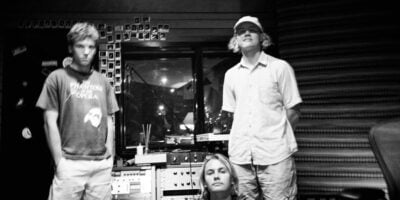Since stoner rock’s inception in the 1980s as the USA’s response to the British metal of the 1970s – namely Black Sabbath – it has achieved a timeliness in which the proponents of the genre always pay tribute to what has come before. This continuity of the stoner rock sound has resulted in longevity as per Orange Goblin, but also the fertile grounding for a rebirth in genre monoliths like Kyuss and Sleep.
Evolving out of sludge doom metal band Asbestosdeath, Sleep released its first album Volume One in 1991. This release has developed over the years into an underground phenomenon, with bands from all genres crediting it as an inspiration. Sleep guitarist Matt Pike took time out from rehab (but not the rehab you’re thinking), preparations for the band’s new album and his work as frontman for stoner rockers High On Fire to chat to the BRAG.
“I just had knee surgery, so I’m chilling out at home at the moment. So I’ve been sitting on my arse for the last week,” says a predictably laconic Pike. “We did our last Sleep show in France, and then did a couple of High On Fire shows – just to make a little bit of money for me to sit around on my butt,” he laughs warmly.
It would be fair to infer that after thirty-plus years on the road plus his current knee recovery, Pike may have had second thoughts about committing to this year’s Australian tour – but even the crustiest of rock’n’rollers gets a bit sentimental now and again. “Our fans in Australia kind of deserve to see Sleep, finally. Obviously I’ve been over in Australia with High On Fire quite a bit and Al [Cisneros – singer and bassist] came with OM recently, but it is really important to us that Sleep plays in Oz.”
“We’ve had some hard times in the past, you know. We made some really youthful albums, with probably the most well-known being Holy Mountain – it was really full of piss and vinegar. We really became good at playing right around Holy Mountain. It had a big impact, but not until a little later.”
“What we were doing at the time, which was in the early ‘90s, was really not that popular,” Pike adds. “We were doing Sabbath-y, doom sounds; a few people kind of got it, but it wasn’t popular. Not like the death metal thing at the time. Like Napalm Death and Carcass; they were doing the popular thing. We were this weird Sabbath band out of the punk scene. We went from Asbestosdeath to Sleep and transitioned musically. It made an impact on people but it seemed like it took a long time to sink in. Almost to the point where at the end, just before we first broke up [1998], people started catching on to it. We only just started getting some fans then.”
It is refreshing now that Pike is willing to grapple with why Sleep’s material is so cool nowadays but struggled to make a commercial impact when it was released. “I think nowadays Sleep’s music is kind of something different [to what’s on offer]. A lot of kids these days are smarter thinkers. If something is really underground, outspoken or different – they all want to have an identity that’s not so MTV. I know what used to be underground hip hop in my day has now turned into a big corporate smear. I’m happy there’s kids out there that aren’t so attached to this corporate spew and know about something that’s a bit better, in the musical context.”
BY DENVER MAXX AND JESSICA WILLOUGHBY
Sleep plays Manning Bar at Sydney University on Sunday October 27.
































